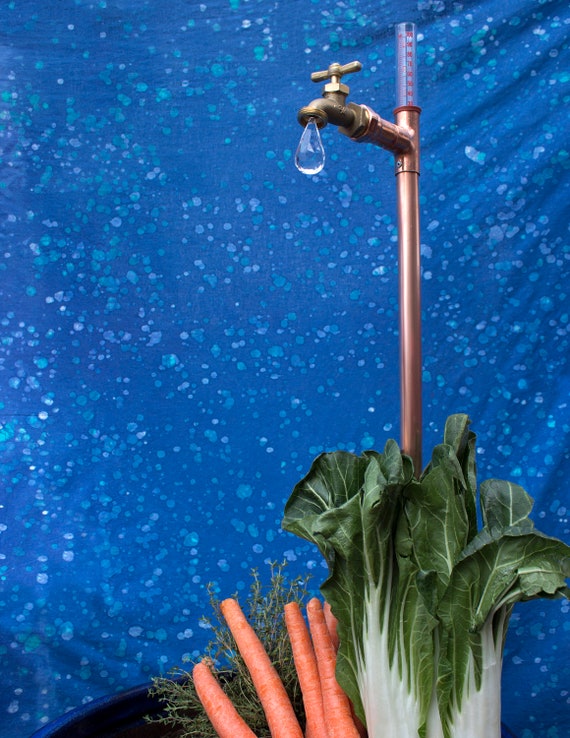Do It Yourself Rainfall Gauge: Simple Actions to Make Your Own
Are you interested in tracking rains in your area? Developing your own do it yourself rain gauge is a efficient and simple method to record and determine rainfall. With just a couple of common products and some fundamental actions, you can quickly build your very own rainfall gauge in the house. In this guide, we will supply you with a step-by-step process to aid you create your own rainfall scale. No need for any type of specialized expertise or equipment - this task can be completed by anybody. By adhering to these simple directions, you will certainly have a dependable device to gauge rainfall and contribute to your understanding of the regional climate patterns. Allow's obtain begun on making your DIY rain gauge today!
Gather Products
To start constructing your DIY rainfall scale, collect all the essential products making use of a thorough checklist of things. Having the best products accessible will ensure the successful development of your rain gauge and enable exact dimensions of rains. You will certainly need a clear plastic container or cylinder, such as a plastic container or container. Make certain the container is clear to ensure that you can easily see the water degree inside. Next off, you will require a leader or determining tape to mark the increments on the container. This will allow you to determine the amount of rains precisely. Additionally, you will require a long-term marker or waterproof tape to note the measurements on the container. When subjected to rain, this will certainly guarantee that the markings remain noticeable even. Ultimately, you will certainly need a tough base or risk to safely hold your rainfall gauge in place. This can be a wood or metal risk that can be inserted right into the ground or a durable level surface to give stability. Collecting these materials in advance will enhance the building and construction process and make sure that you have everything you require to create your own do it yourself rain scale.
Prepare the Container

Mark the Dimension Increments
To precisely determine the quantity of rains, accurately noting the dimension increments on your DIY rain gauge is important. Without clear and exact markings, it would certainly be tough to identify the precise quantity of rainfall collected in your rainfall gauge. Here are the steps to note the measurement increments on your rainfall gauge.
The most usual devices for measuring rains are inches and millimeters. As soon as you have picked the device, utilize a permanent pen or water-proof Look At This paint to note the increments on the side of your rain gauge.
When noting the increments, it is very important to guarantee that they are evenly spaced and clearly visible. Make use of a leader or gauging tape to make certain accuracy and uniformity. Furthermore, ensure that the markings are immune to fading or abrading, as direct exposure to the components might create them to wear away in time.
Area the Rainfall Scale Outdoors
The rain scale should be put outdoors to precisely gather rainfall information. The place picked for the rain gauge ought to be open and free from any kind of blockages that can potentially influence the dimension of rains. The Rain Gauge.
Furthermore, it is important to position the rainfall scale on a secure surface area, such as a level ground or a tough blog post. This will certainly stop any kind of movement or tilting of the gauge, which might cause unreliable measurements. It is additionally recommended to stay clear of placing the gauge near any kind of sources of fabricated water, such as sprinklers or drainage systems, as this could disrupt the precision of the measurements.
Monitor and Document Rainfall Data
Regular monitoring and recording of rains information is essential for precise data analysis and interpretation. By tracking rainfall dimensions, you can gain useful insights right into climate patterns, climate fads, and water source administration. To successfully monitor and tape rainfall information, it is necessary to establish a routine and maintain regular practices.
To start with, guarantee that your rainfall scale is positioned in an open location far from barriers such as trees or structures that might obstruct rainfall. Additionally, ensure the rainfall scale is level and firmly secured to prevent any activity that might influence the precision of the dimensions.

When videotaping the rainfall data, it is very important to note the day and time of each measurement. Utilize a leader or a measuring stay with identify the rains depth in the rainfall gauge, and document this info More Info precisely.
To make sure the accuracy of the dimensions, it is recommended to empty the rainfall gauge after each recording. This will certainly avoid any overflow or dissipation from influencing subsequent dimensions.
Conclusion
In conclusion, developing a DIY rainfall gauge moved here is a easy and practical method to keep track of and videotape rains data (The Rain Gauge). By complying with the actions outlined in this post, you can conveniently gather products, prepare the container, mark the dimension increments, and put the rain scale outdoors. Routinely keeping track of and recording rainfall data can offer valuable information for various purposes
Having the ideal products on hand will certainly ensure the effective creation of your rainfall scale and allow for accurate measurements of rainfall.To precisely gauge the quantity of rains, precisely noting the dimension increments on your Do it yourself rainfall scale is crucial.The rain gauge must be put outdoors to precisely gather rains data. The area selected for the rain scale need to be open and free from any kind of blockages that can possibly affect the measurement of rains.In conclusion, creating a DIY rainfall scale is a straightforward and practical means to keep an eye on and videotape rainfall data.